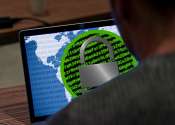Malware, short for malicious software, is software designed to infiltrate or damage a computer system without the owner's informed consent. The expression is a general term used by computer professionals to mean a variety of forms of hostile, intrusive, or annoying software or program code. The term "computer virus" is sometimes used as a catch-all phrase to include all types of malware, including true viruses.
Software is considered malware based on the perceived intent of the creator rather than any particular features. Malware includes computer viruses, worms, trojan horses, most rootkits, spyware, dishonest adware, crimeware and other malicious and unwanted software. In law, malware is sometimes known as a computer contaminant, for instance in the legal codes of several U. S. states, including California and West Virginia.
Malware is not the same as defective software, that is, software which has a legitimate purpose but contains harmful bugs.
Preliminary results from Symantec published in 2008 suggested that "the release rate of malicious code and other unwanted programs may be exceeding that of legitimate software applications." According to F-Secure, "As much malware [was] produced in 2007 as in the previous 20 years altogether." Malware's most common pathway from criminals to users is through the Internet: primarily by e-mail and the World Wide Web.
The prevalence of malware as a vehicle for organized Internet crime, along with the general inability of traditional anti-malware protection platforms to protect against the continuous stream of unique and newly produced professional malware, has seen the adoption of a new mindset for businesses operating on the Internet - the acknowledgment that some sizable percentage of Internet customers will always be infected for some reason or other, and that they need to continue doing business with infected customers. The result is a greater emphasis on back-office systems designed to spot fraudulent activities associated with advanced malware operating on customers computers.









